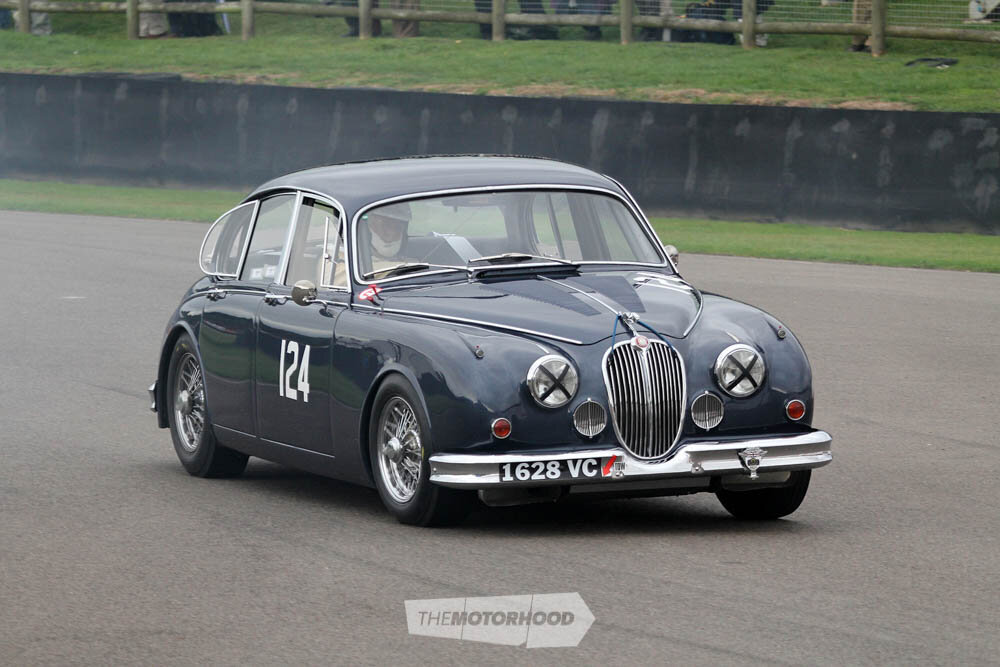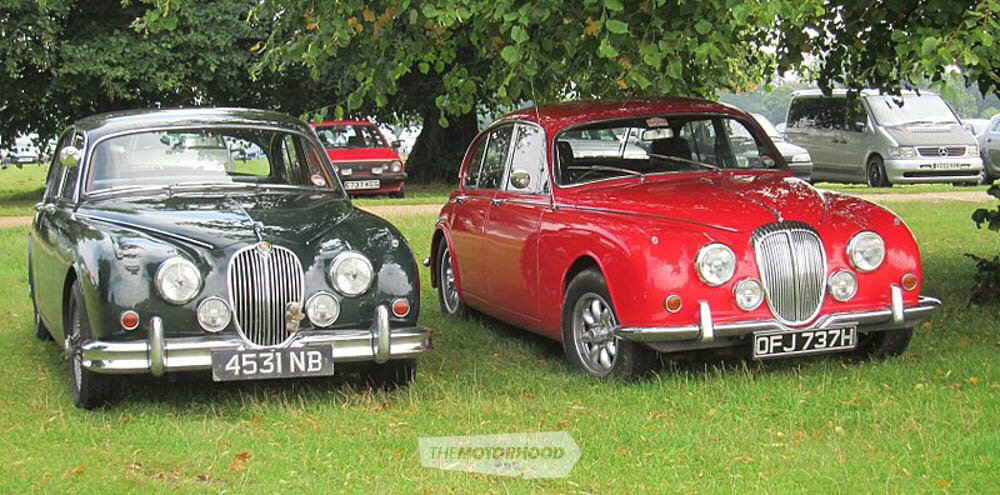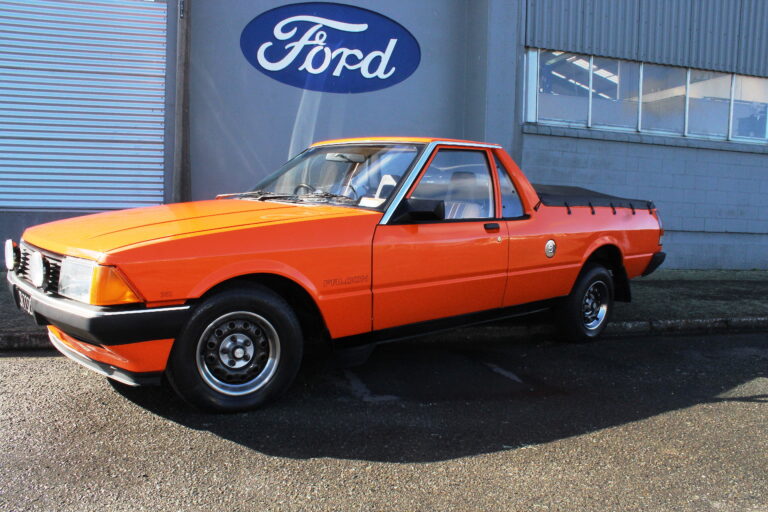A gentleman’s express, a race-winning touring car legend, and a London bank robber’s getaway car of choice — the Mark 2 Jag remains iconic
Jaguar’s motto of “grace, space, and pace” applies perfectly to the Mk2. With more than enough grunt from the 3.4- or 3.8-litre XK straight-six, disc brakes from the D-Type Le Mans racer as standard kit, and lashings of luxurious burr walnut and leather trim, the glorious Mk2 became the stuff of dreams for many. While small by today’s standards, the car’s simple and elegant cabin is still surprisingly roomy.
“Leather, wood, wires, good handling, that wonderful straight-six motor and that unmistakable Jaguar roar — the Mk2 is, without doubt, one of Jaguar’s finest and most popular models,” says Jesmond Micallef of Waimak Classic Cars. “A well-sorted Mk2 is enjoyable to drive, civil, and composed, and I think it brings out the essence of a classic British sporting saloon.”

Favourite of the overseas- funds set
The Mk2 was largely styled by Jaguar founder and CEO Sir William Lyons. Phil Redmond, life member of the Jaguar Drivers Club and member of the Daimler Jaguar Owners Spare Parts Club, has fond memories of wanting a Mk2 growing up.
“Baby boomers such as myself were in awe of this car. As a 13-year-old, I enjoyed visiting an elderly wealthy widow at Glenmark with my grandparents. She purchased several Mk2 Jaguars in the ’60s from Archibalds with overseas funds. I can still remember sitting in the cars in her garage, playing with the dash switches and thinking, One day I’ll own one of these,” says Phil.
Of the 186,000 Mk2s built during its 10-year production run, many made their way over here, and thanks to the exploits of people like Ray Archibald, a Mk2 was hot property with well-to-do Kiwi motorists.
Due to the New Zealand climate and our unsalted roads, many of New Zealand’s Mk2s have since been snatched up by buyers in the UK and Japan. Stories abound of UK buyers hoovering them up in the ’80s for around $10K each and selling them in the UK for triple the money.
This trend is confirmed by Jesmond. “There was a time when this was happening a lot. They were being gobbled up in Japan and the UK, but in recent years, with more awareness and education, they mostly are being purchased by a new generation of Kiwis,” he says.
As a result of this, most Kiwi Mk2s command much higher prices than they did 20 years ago. That said, if you are prepared to do some resto work, they can be had for a lot less. “Prices of Mk2 Jaguars currently range from $1K to $60K. A good average model can be acquired for $15K to $25K depending on options and condition,” says Phil.
Of course, not all Mk2s were created equal from the factory: “The most popular remains the 3.4 and the 3.8 manual with overdrive,” says Jesmond. “The 3.8 is even more sought after, as it is much harder to come by, as long as it’s a genuine matching-numbers car”.

The ultimate Mk2
he lighter 2.5-litre V8-engined Daimler is nearly as quick as the 3.4 but most had auto boxes. The 2.4, later designated ‘240’, might be the most overlooked Mk2 around but is still worth considering. “A 3.8 manual with overdrive on wire wheels has long been regarded as the ultimate Mk2. The 3.4 is a good and cheaper alternative. The 2.4 is somewhat underpowered and a 240 will fetch under half the price of a 3.8,” says Phil.
Being a classic Jaguar, there is plenty to look out for before pulling the trigger on your very own Mk2. “Rust can build up in the floorplan, sills, wheel arches, wings, and bottom of the doors, so proper checks are crucial. I would pay close attention to the door alignment, which could mean problems with the shell. I would inspect box sections and legs of the chassis, the front cross member, suspension mountings and jacking points, and also the spare-wheel well,” says Jesmond.
It is also important that you find yourself a matching-numbers example and that everything under that svelte bonnet is ticking over nicely. “Check the tag in the engine bay. Many 3.8s have been converted from automatic to manual. Rattling from the front of the engine could be a sign of impending timing-chain replacement, which is a tricky and expensive job. Check that oil pressure is healthy and for excessive smoke from the exhaust,” says Jesmond.
The Moss four-speed manual overdrive gearbox, also found in earlier versions of the E-Type, is reliable, as is the automatic, but it still pays to check it over thoroughly. “The overdrive unit can be replaced without removing the gearbox. The BorgWarner Type 35 automatic lasts well with regular fluid changes. Replacing a worn clutch means the engine has to come out. A failed master or slave cylinder could cause clutch problems,” says Jesmond.

Not cheap at half the price
With such a huge following both locally and over the world, there is always a steady supply of parts and specialists available. Our own Quinton Taylor, who owns a modified 2.4 Mk2, can confirm this. “Parts availability is very good and just about everything is available. The situation in the UK and US is very good for parts also,” he says. Some parts are pricey, mind. Jaguar recently restarted production of the iconic XK straight-six found in the Mk2. You can have a brand-new block for NZ$27,467 — plus tax and shipping.
The Jaguar Mk2 market is showing no signs of slowing down. “I think demand will increase and a solid matching-numbers car provides a sound investment with the price likely to increase over time,” says Phil. “The Mk2 is proving to be a steady investment,” Jesmond says. “They will appreciate and make it a bit of a no-brainer to buy one of these beauties rather than leave money in a term deposit. You sure can’t go wrong with a good Mk2.”
There can be no doubt that a Mk2 Jag is, as those East End villains who appreciated a fast getaway would say, a “pucker motor”.



